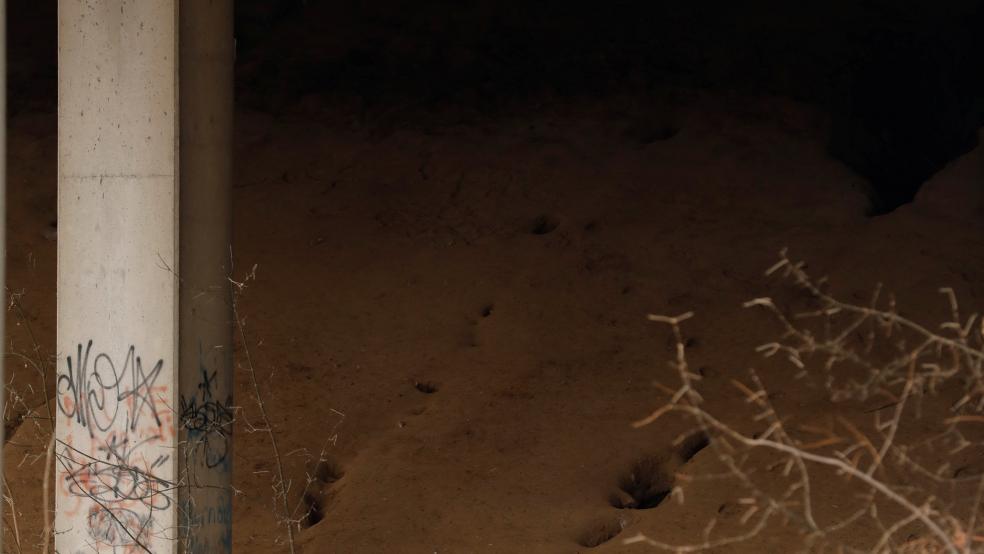WASHINGTON(Reuters) - In his State of the Union address on Tuesday, President Donald Trump called out the nation's crumbling infrastructure and called for more spending on bridges and roads.
"Together, we can reclaim our great building heritage. We will build gleaming new roads, bridges, highways, railways, and waterways all across our land," Trump said, calling for public and private infrastructure investments of at least $1.5 trillion over 10 years. The details of Trump's plan are nebulous, so it is unclear how much will go to what projects. But Trump, along with other politicians and lobbyists, has frequently cited bridges as a danger to people and commerce. Business groups as diverse as the National Stone and Gravel Association and the American Beverage Association have called for more spending. However, a Reuters analysis of nationwide bridge data reveals the fretting over the safety of bridges and other road infrastructure is overblown and could distract from more serious problems elsewhere:* About 9 percent of highway bridges were considered structurally deficient in 2017. But only 4 percent of bridges carrying significant traffic, at least 10,000 daily vehicle crossings, were deficient. That does not mean an imminent danger of collapse, just that repairs are needed.* For those with more than 200,000 crossings, roughly the nation's 1,200 busiest bridges, that figure drops to under 2 percent, or fewer than 20 bridges. * The share of all bridges deemed structurally deficient has been falling for decades, down from 22 percent in 1992 and 12 percent in 2009. Indeed, though an 2014 academic study of bridge failures found roughly 120 bridges collapse or partially collapse every year, most do so because of floods, fires and collisions rather than structural decline. And most failed bridges have fewer than 755 daily crossings, with only about 4 percent involving fatalities. (Graphic: http://tmsnrt.rs/2EmHQm5)"We the public should feel safe," said Wesley Cook, a structural engineer at the New Mexico Institute of Mining and Technology who authored the 2014 bridge failure study. The Reuters analysis squares with independent assessments that U.S. road infrastructure is still among the world's best.America's road network, which includes its bridges, was ranked third among the largest advanced economies by company executives, behind Japan and France but superior to those of Germany, Britain, Canada and Italy, according to the World Economic Forum's latest global competitiveness report. The United States comes only slightly behind Japan and France in rankings of overall infrastructure quality.Experts agree boosting public and private investment in infrastructure by $1-2 trillion over the next decade might meet or come close to meeting the growing economy's needs. However, the distortion of the debate by Trump and other politicians creates a danger that resources will be misdirected from more pressing infrastructure needs, such as aged water pipes leaching lead and schools - or from projects that will have a considerable regional economic impact. "Fixing bridges is fine until unmaintained pipes break and interrupt your commute," said Shalini Vajjhala, founder of infrastructure design firm re:focus partners.The American Society of Civil Engineers reckons U.S. mass transit is in worse condition than any other infrastructure in terms of its quality and funding. In a 2017 report, the lobbying group also scored U.S. dams, levees and drinking water facilities as in worse condition than bridges.SHADOW OF FEE FEE CREEK America was jolted by infrastructure concerns in 2007 when the Interstate 35 bridge over the Mississippi River in Minneapolis collapsed during rush hour. Thirteen people died, fueling calls for more bridge investment and shaping any discussions of U.S. infrastructure ever since. Federal investigators, however, blamed a design flaw rather than deterioration for the collapse.The reality of U.S. bridge problems is better reflected where Interstate 270 crosses Fee Fee Creek outside St. Louis. That bridge carries about 223,000 vehicles every day and is among the busiest in America, according to the Department of Transportation's 2017 National Bridge Inventory analyzed by Reuters. The inventory catalogs America's 615,000 highway bridges longer than 20 feet.The Missouri state government considers the Fee Fee Creek bridge structurally deficient and has set aside $5 million for repairs. The problem is deterioration in and around the structures supporting the ends of the bridge, said Dennis Heckman, an engineer at Missouri's transportation department. While bridges in need of repair stand a higher risk of collapse they do not necessarily pose an imminent danger.The state had four bridges in the 2017 inventory rated as structurally deficient with more than 200,000 daily crossings. "If they were at a point of being dangerous, they would be closed," said Heckman.The fact is, state and local governments constantly repair highways and bridges. Together with the federal government, they spent $16.4 billion fixing bridges in 2012, according to the Federal Highway Administration's (FHWA) latest report detailing public sector highway investments. Public spending on transportation and water infrastructure rose modestly in 2009 and 2010 as governments countered the Great Recession, but outlays fell in the subsequent four years when taking inflation into account, according a 2015 report by the Congressional Budget Office.For bridges, increasing spending modestly - just enough to keep up with inflation - would cut the share of those needing repairs by about two thirds by 2032, the FHWA said in the report, published in 2017. Governments need to boost spending by about $37 billion a year to sufficiently maintain and expand roads and bridges, according to the FHWA. (Reporting by Jason Lange and Katanga Johnson; Editing by Damon Darlin and Tomasz Janowski)Crumbling bridges? Fret not America, it's not that bad

WHITNEY CURTIS



